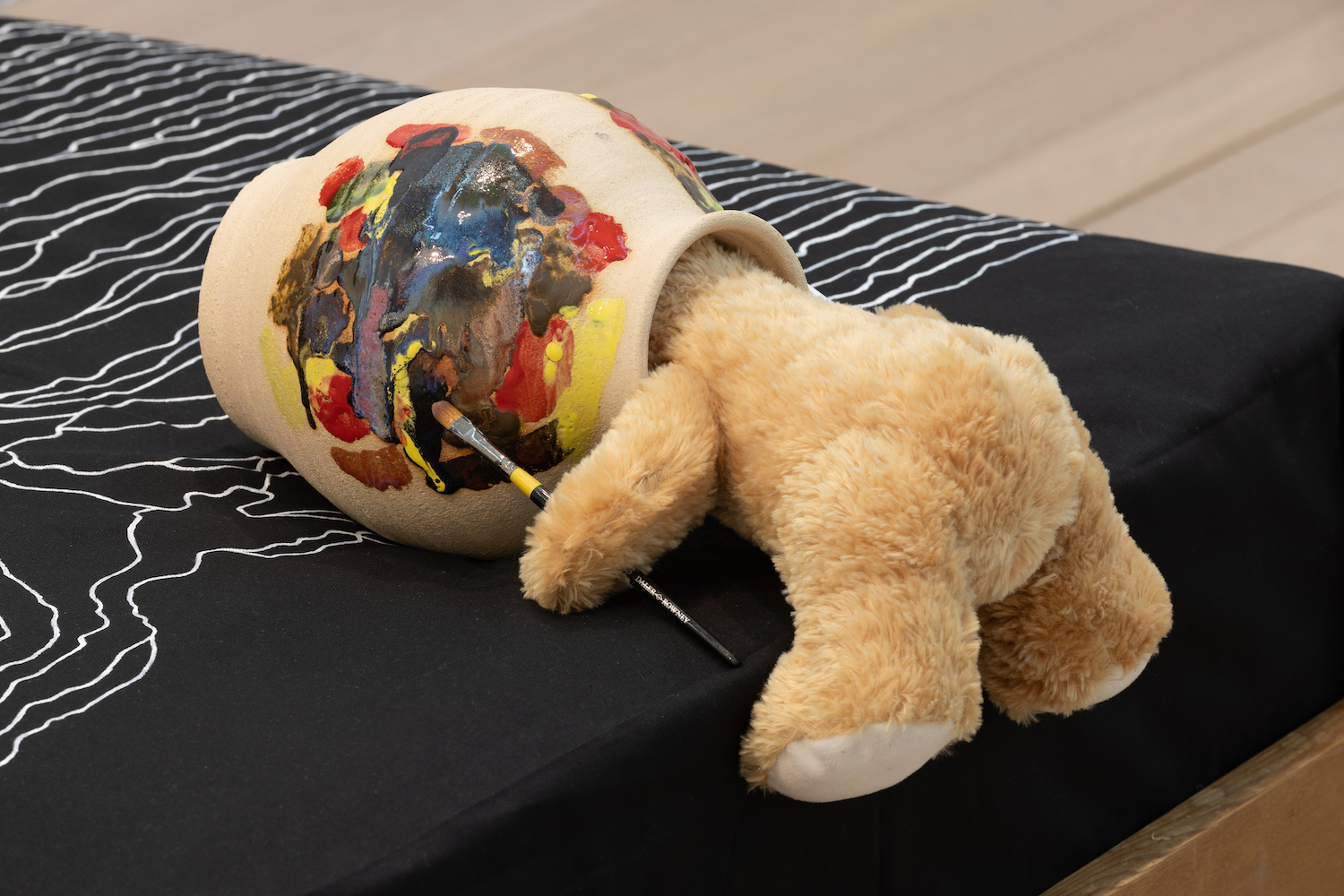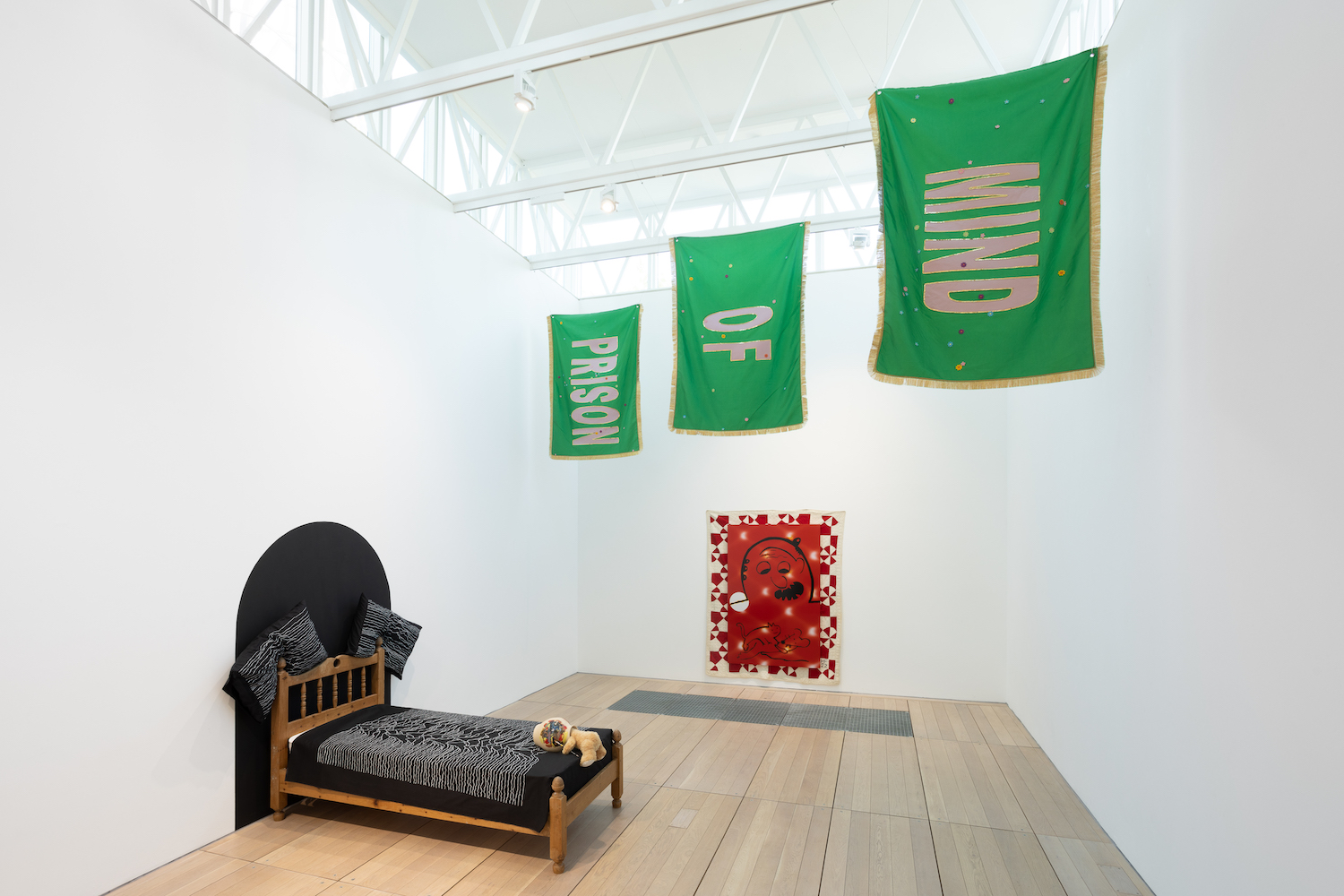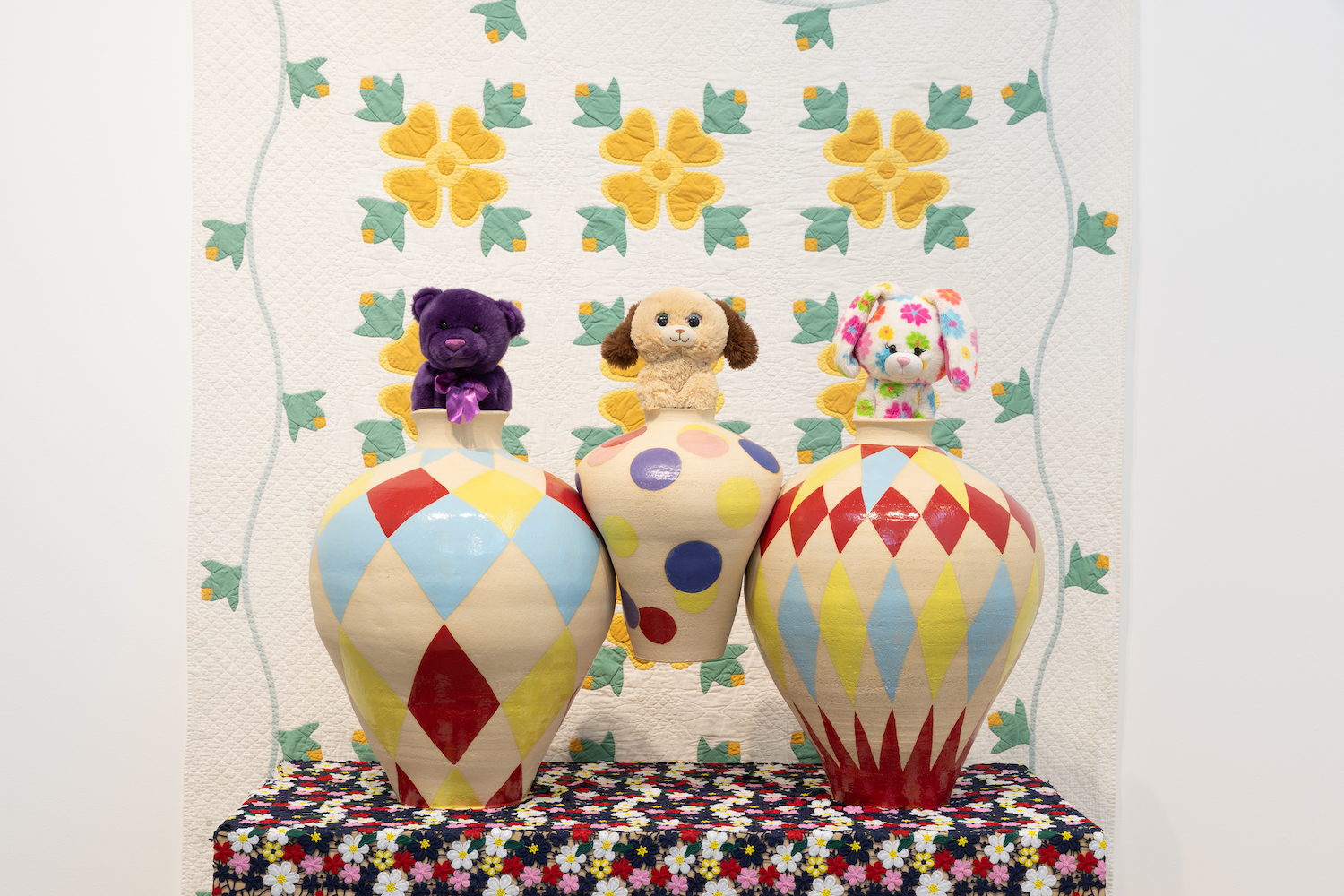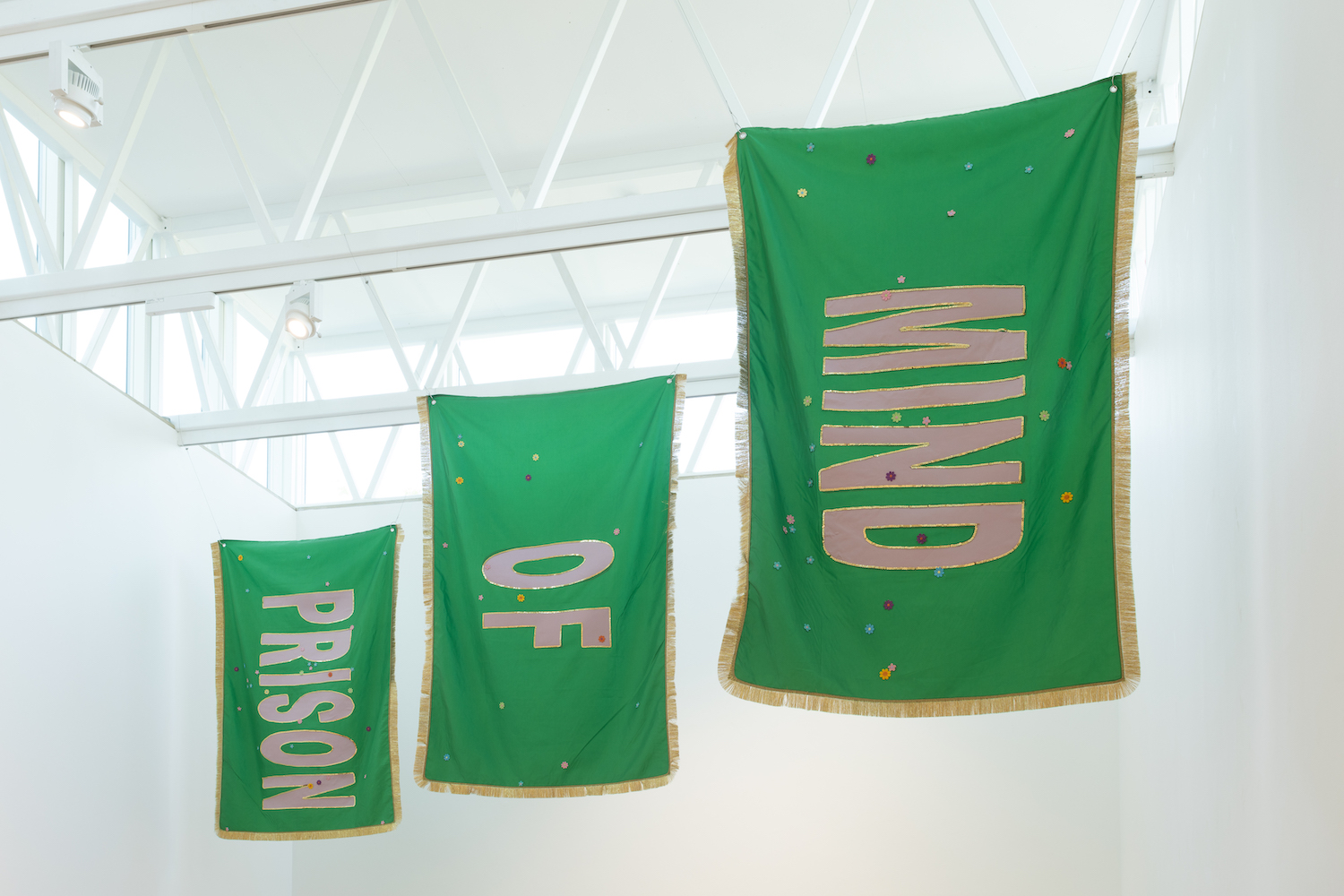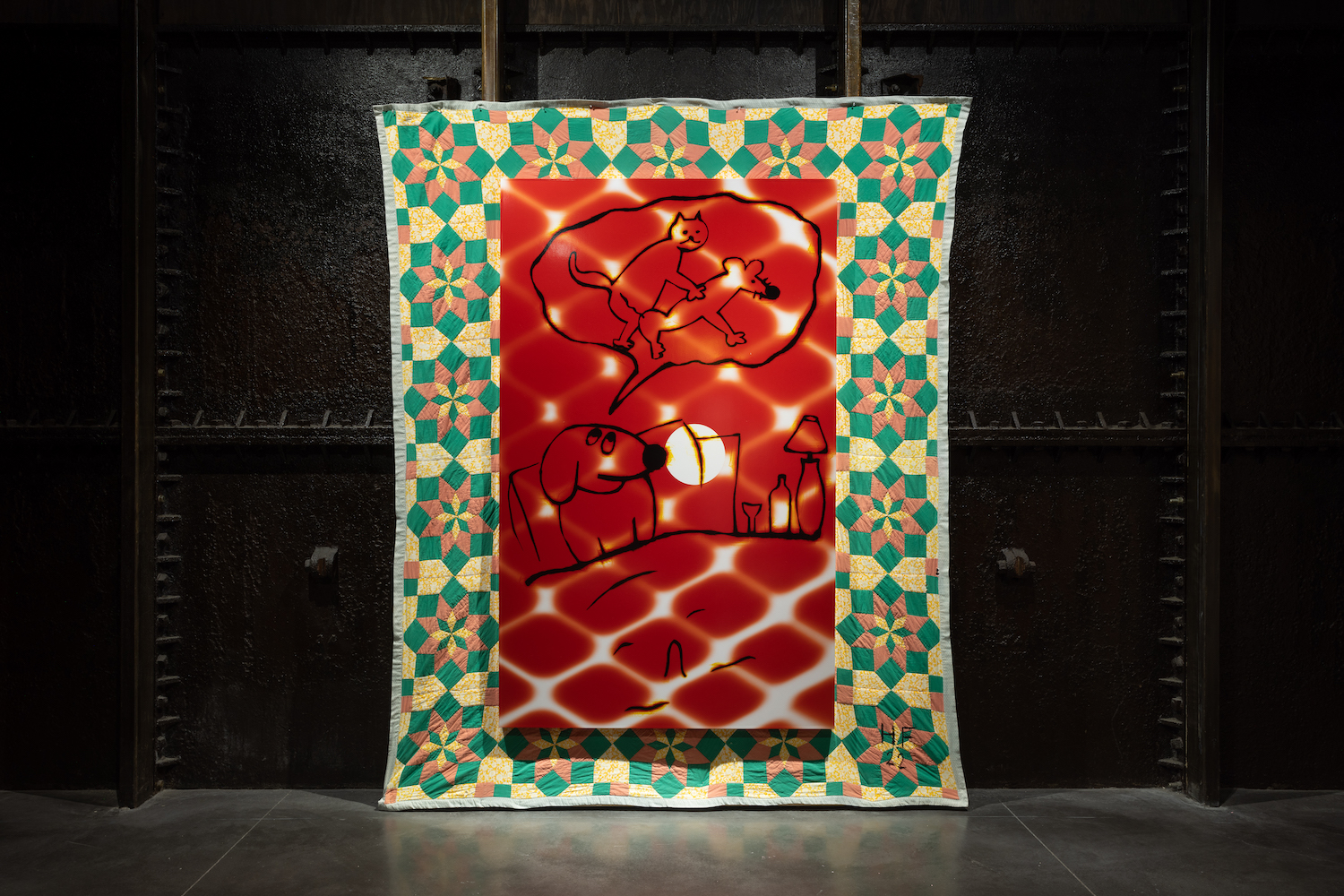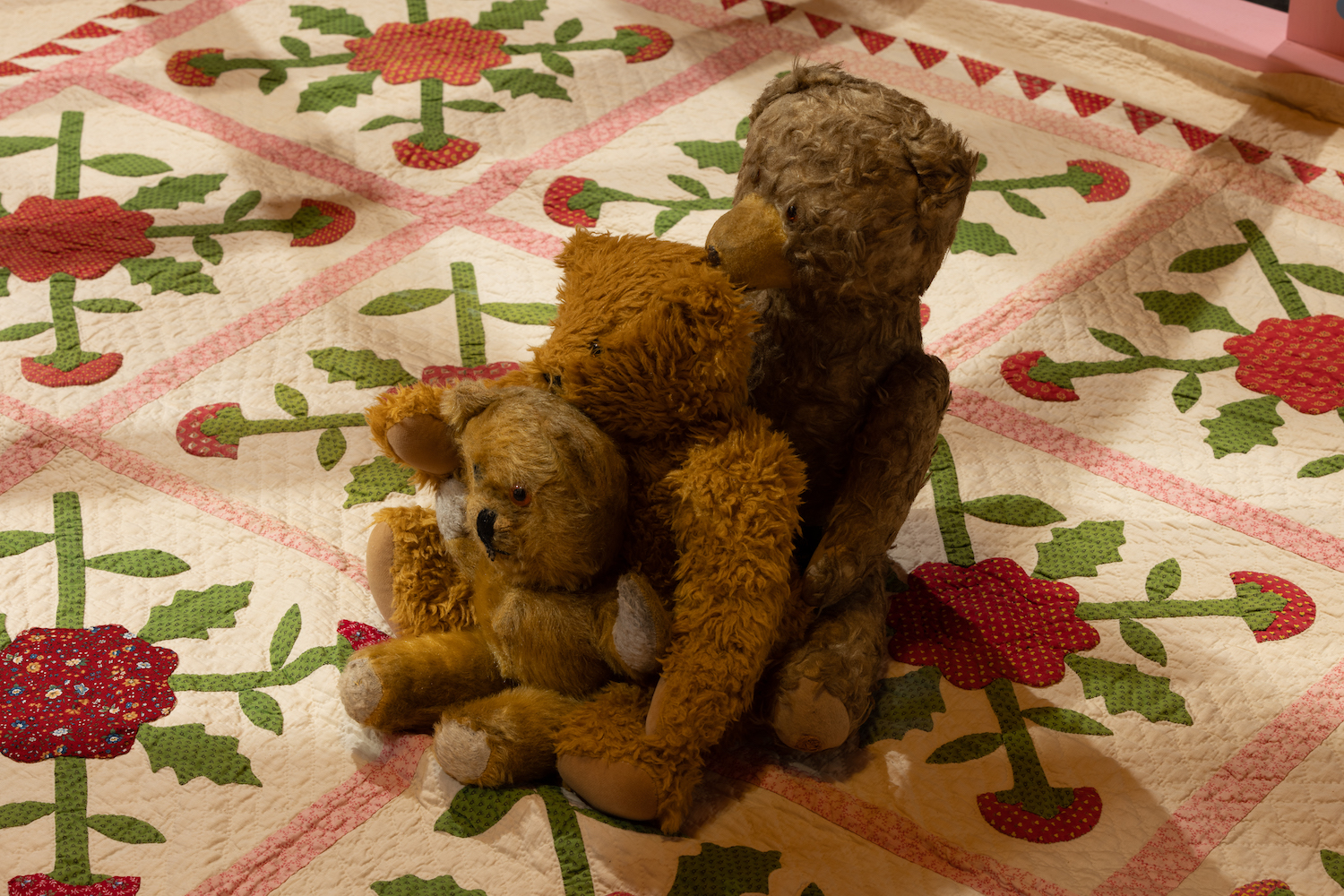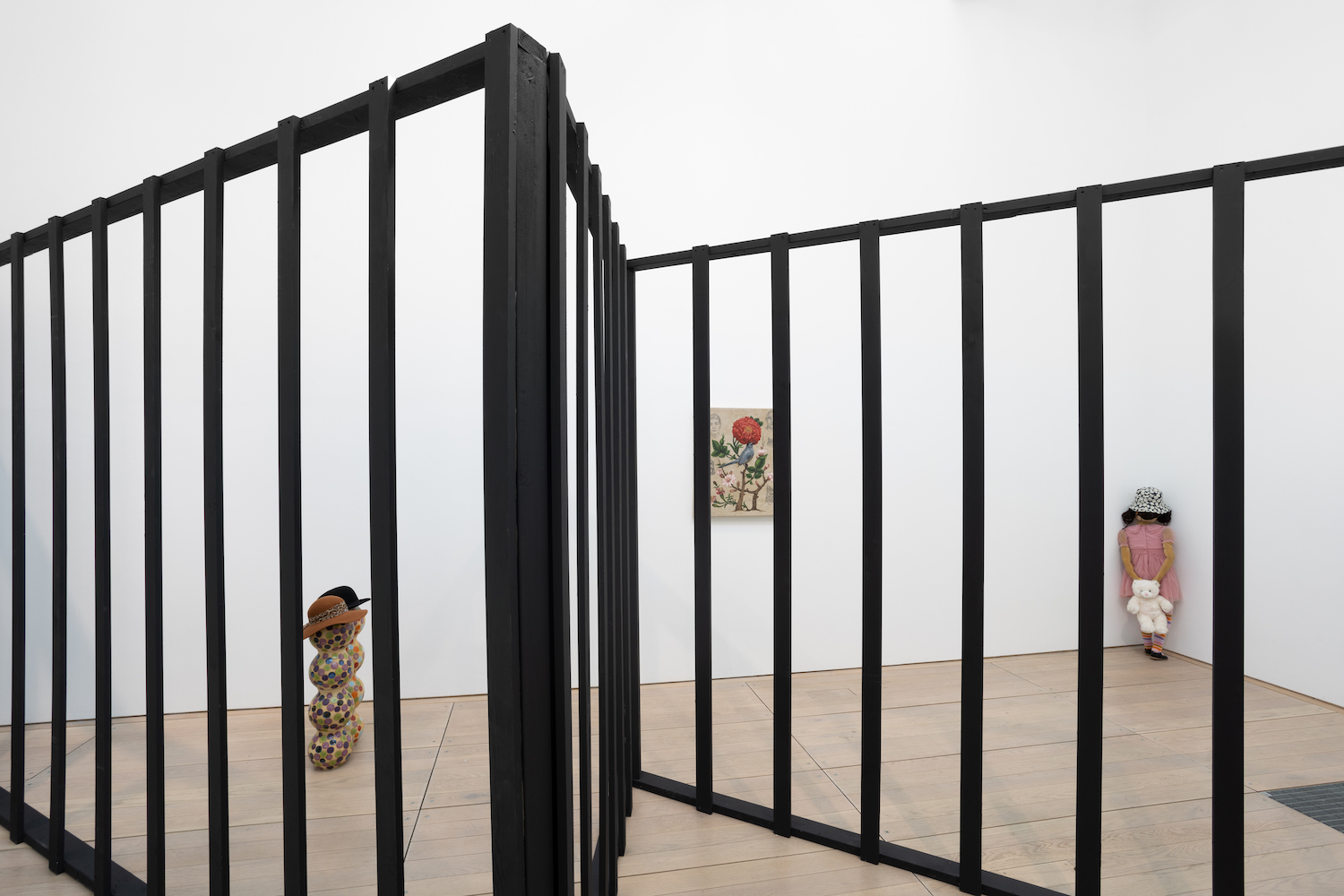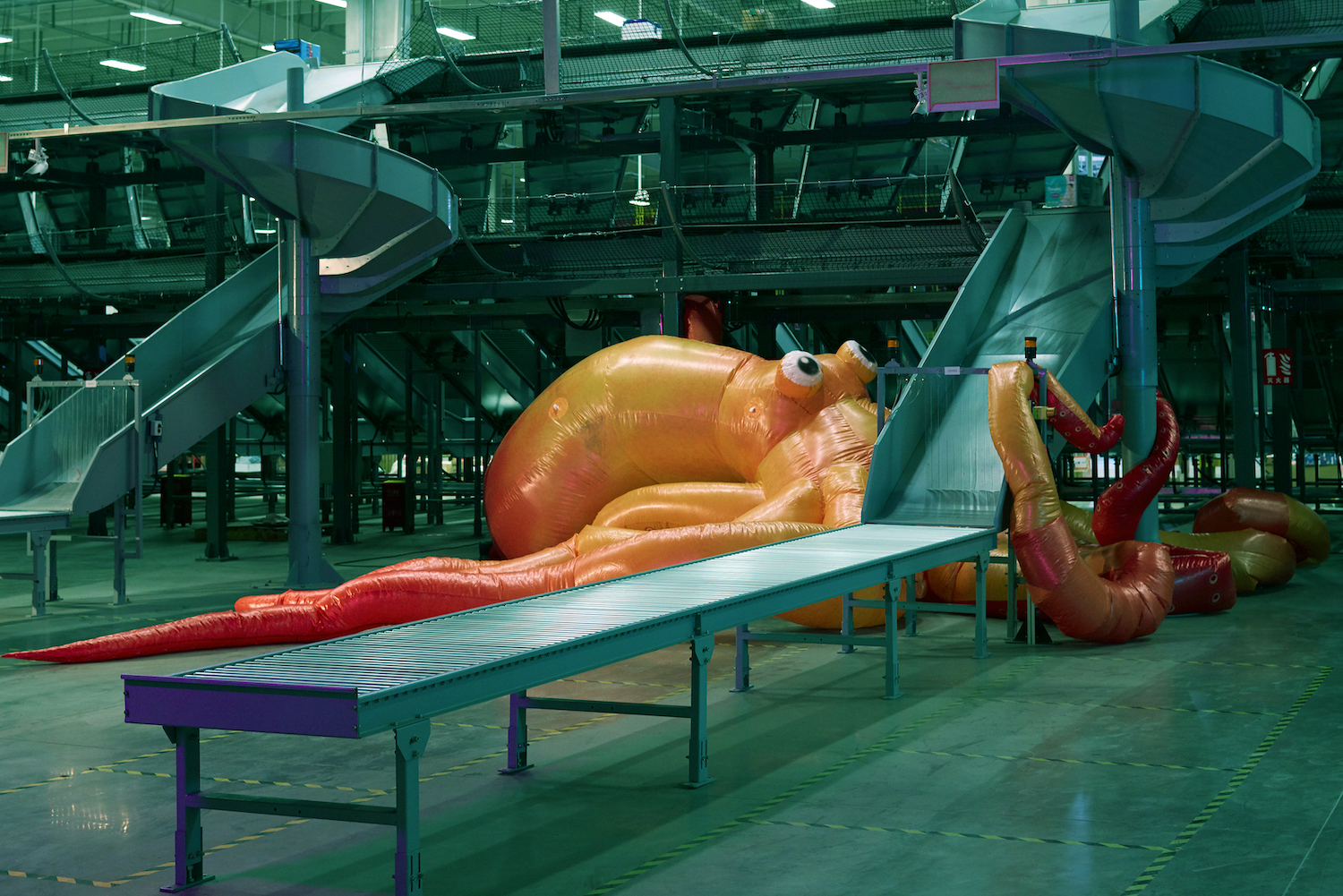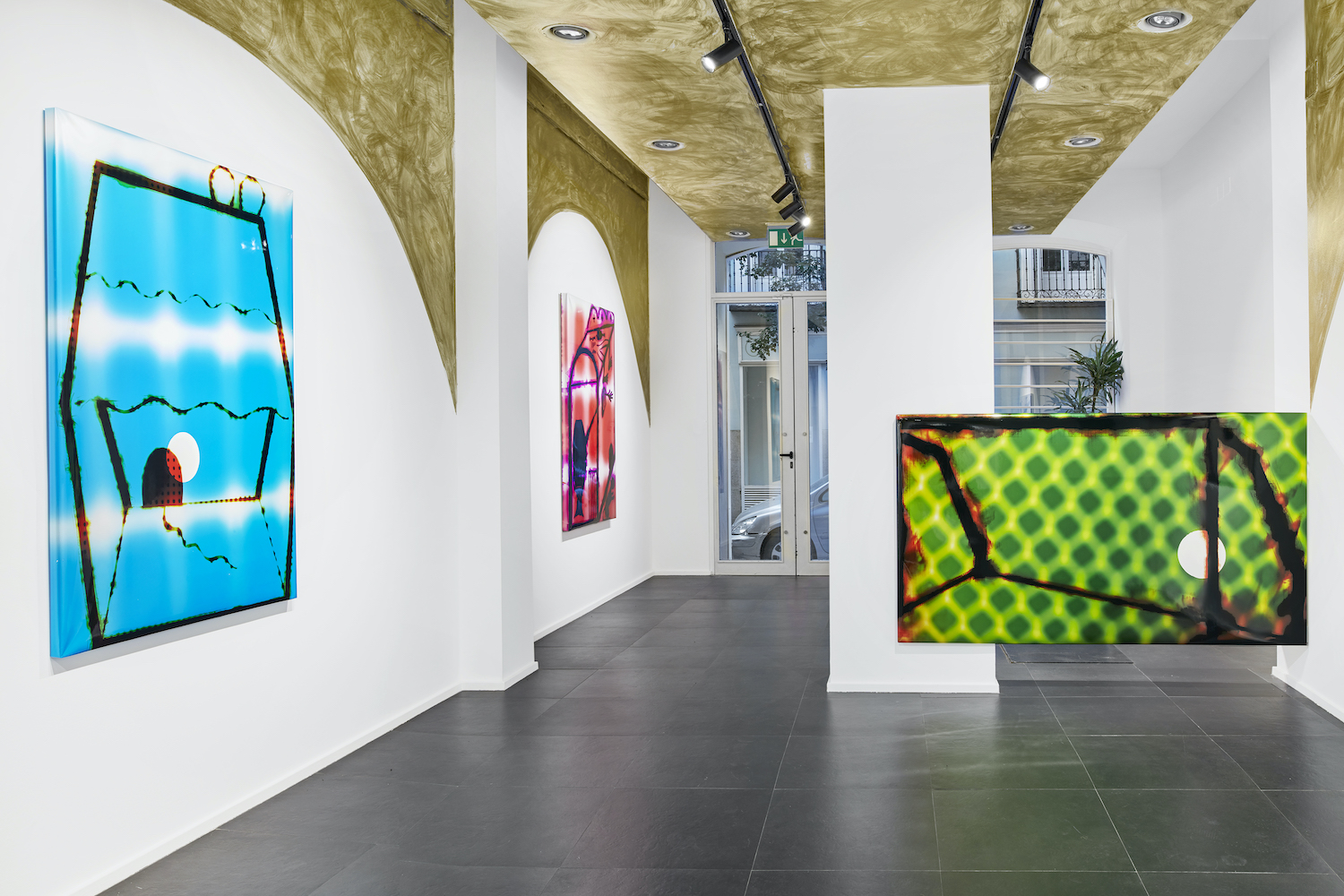Working across painting, photography, ceramics, sculpture, performance and installation, Hadi Fallahpisheh weaves a narrative that is part-allegory, part-fable. A recurring cast of a human, a mouse, a cat and a dog form a quasi-family unit that at times feels nostalgic and domestic, but often veers toward entrapment and violence, prompting questions around belonging, conflict and anxiety.
Taking place across all four of the CCA’s upper galleries, the exhibition centres on ideas around freedom – its symbolisms, protections and contingencies. Life-size cages interrupt the exhibition experience, separating artwork from viewer. The exhibition’s title references the German concept of Vogelfrei, literally meaning “as free as a bird”, but which has been corrupted over time to mean “rightless, without protection, outlawed”, as defined by Italian philosopher Giorgio Agamben. Through literally caging both the viewer and his artworks, Fallahpisheh suggests that freedom is always a contradictory position that relies on the captive or unprotected status of others.
Fallahpisheh also presents the darkroom as prison, referencing the long periods of blacked-out isolation that his photographic paintings require. Drawing across photosensitive paper with colour gels and a torch, the artist leaves a large amount of his work to chance and improvisation, not knowing what colours might emerge until the end. Photography without a camera becomes a performance, emphasising the complete reliance on light in darkness to produce images. In this way, Fallahpisheh’s process references how past traumas are brought to light through therapy and exposure. His anthropomorphic characters – who often appear trapped in houses – present a kind of post-Disney family, their deliberately naïve style reflecting a childlike reliance on power structures and hierarchies. Transgressive and irrational, these figures raise questions around the framework of the family, and its in-built notions of harmony and containment.
Fallahpisheh plays with the innate power of certain objects to induce memories of childhood. A number of antique quilts from the 1920s serve as backdrops or frames to the photographic paintings. They bring warmth and a sense of domesticity to the works, conjuring the sense of a body but also quaint interior décor and family heirlooms. The exhibition will also feature ceramic works that veer between human-like forms and precariously stacked totems. The ceramics’ hard fragility sharply contrasts with their pliable appearance, with pots bent, balanced, wedged between each other and stuffed with soft toys. Stuffed animals – often in various states of distress – and fashion accessories serve as nods to pop culture and the intimacy of nostalgia, and query how nostalgia can warp the boundaries between memory and imagination.
A new, choreographed performance entitled House Animals will take place within the exhibition during the opening. Fallahpisheh’s cat, mouse and dog characters will be embodied by dancers, with gentle reference to Merce Cunningham.

